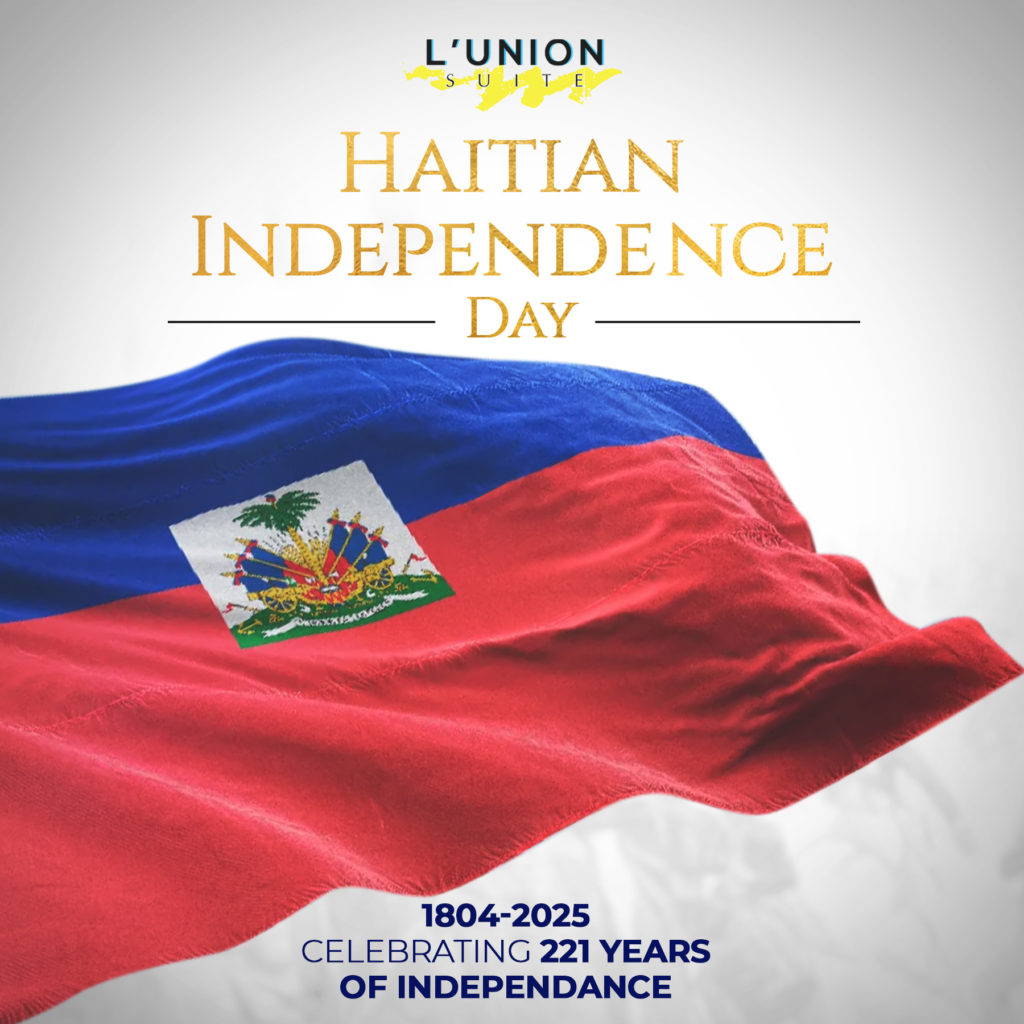
I love Kreyolicious blog and since today is Haitian Flag Day, I thought I would share one of her many great articles with you.
Flag day The Haitian flag is a symbol of pride for many Haitians. Some flaunt the flag, tattoo it on their bodies but may not be aware of its history or the full meaning behind the symbol. Come now, Haiti History 101 pupils, how many of these did you know?
10. The woman who sew it together was Catherine Flon.
9. It was sewn together on May 18, 1803 in the city of Archaie [come on, you can say it: Ar-kai-yeah]. “Pour le Drapeau” (For the Flag), Haiti’s national anthem was written 100 years later by Justin Lhérisson with music by Nicolas Geffrard. No, not that one; another Nicolas Geffrard.
8. Historians have maintained that the former slaves of Haiti shredded out the white of the flag so that the blue and red could come together, symbolizing the unity of the mulatto class of Haiti with the “full-blooded” blacks.
7. As romantic and dramatic as Fact #8 might seem, it appears that The Haitian flag did not come into being just then, and the red and blue union not just some impromptu on the part of the new nation. According to the book Vodou in Haitian Life and Culture: Invisible Powers edited by Claudine Michel, and Patrick Bellegarde-Smith, the whole origin of the national symbol is deeply rooted in the Vodun religion. The red and blue are the colors of the god of war Ogou, and Dessalines was reportedly in a temple of the religion in Merote, Haiti when the flag was created. Most of the objects that make up Haiti’s national coat of arms, such as the machete, the palms—according to Laurent Dubois—are symbols of a Vodun temple.
6. The flag was changed from blue and red to black and red in 1964 during the presidency of Francois Duvalier. When Duvalier’s son went into exile in 1986, the flag was restored to red and blue. Duvalier wasn’t the first person to adopt the red and black flag. According to historian Elmide Méléance, Dessalines switched to black and red upon his crowning as Emperor Jacques the First in 1805.
5. According to the book Revolutionary Freedoms, at one point, two different national flags flew in Haiti. After the death of Dessalines, Haiti was divided between two rulers Alexandre Sabes Pétion and Henri Christophe. Pétion reverted to the blue and red flag in the South of Haiti, while King Henri (ahem, Henry) kept the black and red. Jean-Pierre Boyer, the man who served as president of Haiti following the deaths of Henri and Christophe ruled Haiti under a red and blue flag.
4. The Dominican flag was partly based on the Haitian flag. The Trinitarians who were ardent contributors to the Dominican Independence movement added a cross in the middle to reflect Catholicism and added a distinctive coat of arms. — Continue Reading Here





























